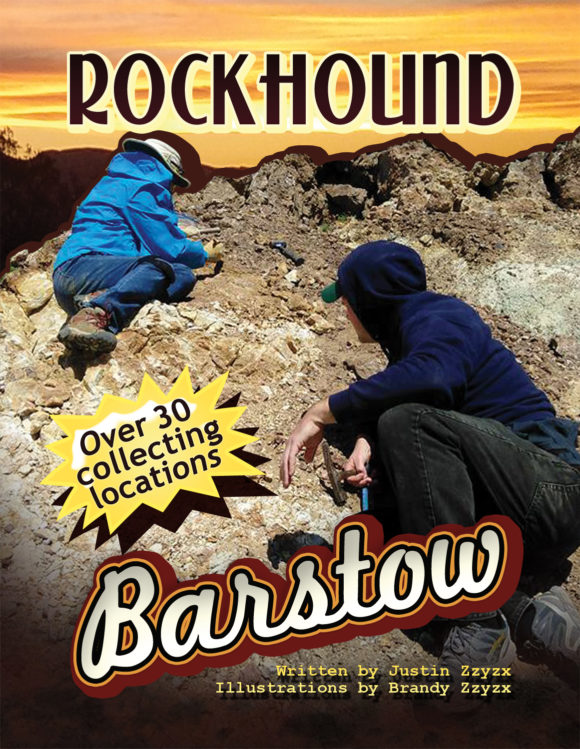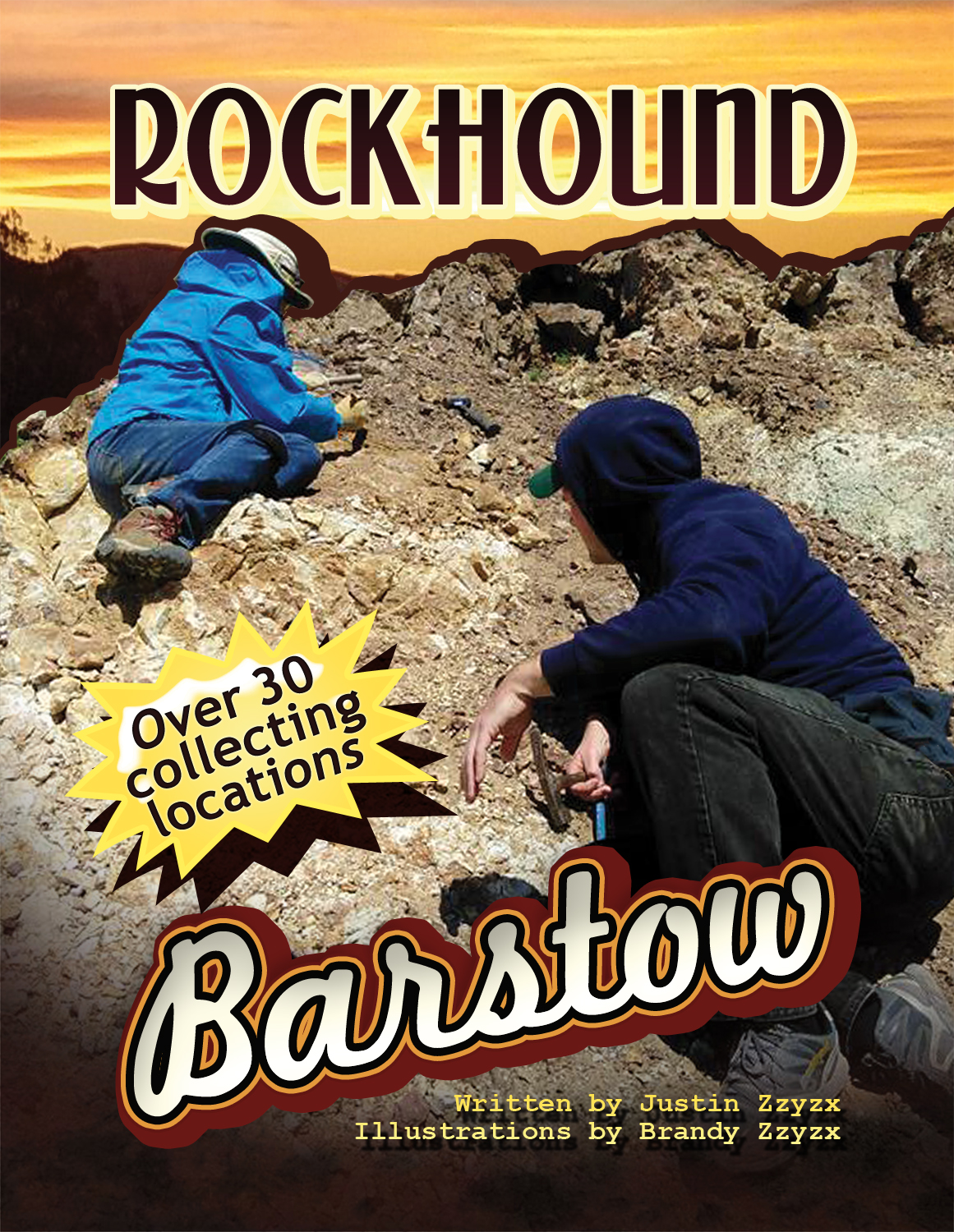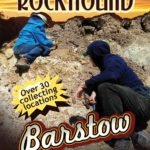
UPDATED 3rd Edition Released August 2020 – Get it now direct on a PayPal link, or check it out on Amazon, eBay and Etsy
The Mojave desert is a mineralogically rich area. One small town of less than 30,000 people serves as a great jumping off point for dozens of fantastic collecting sites. Many of these locations are Southern California classics, found in field guides dating to the early 1940’s and surprisingly, still producing to this day. The Cady Mountains are an endless source of material. You can be sure that enough time spent in the loving folds of the Cady mountains will reveal some mind blowing treasures to the lapidarist.
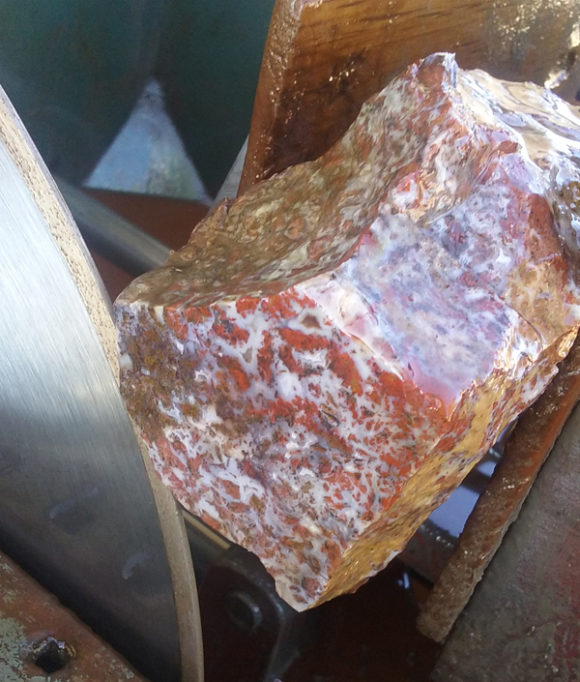
Top Notch Agate being cut into slabs. The Cady Mountains produce beautiful treasures you’ll love working with!
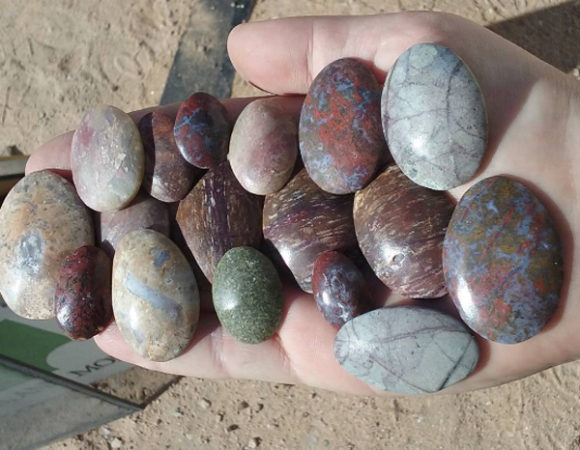
A sampling of cabochons made from material found in the Cady and Alvord Mountains
Just a few miles outside of Barstow you hit the Calico Mountains with a vast silver district, an amazing series of borate deposits, celestite for days, tons and tons of fine selenite and ample supplies of petrified palm root just pouring out of the hills…and silver lace onyx and calcite concretions that can have celestite and quartz replaced spiders and flies inside! That is just the things you can find in a small mountain range just four miles north of highway 15!
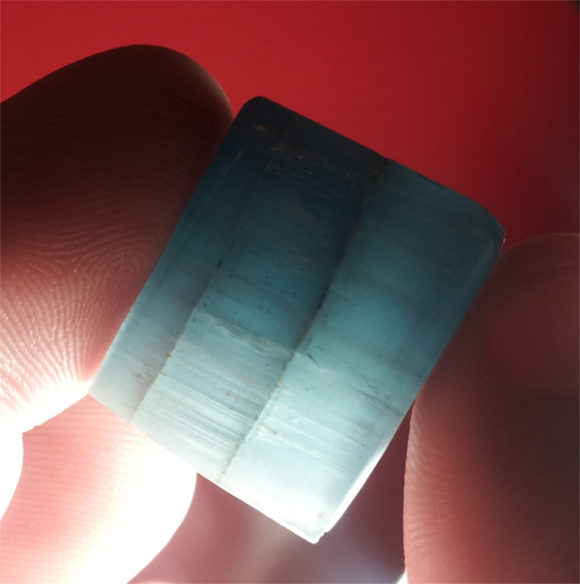
Polished Celestite from one of the many celestite deposits found along with the Borates of the Calico Mountains
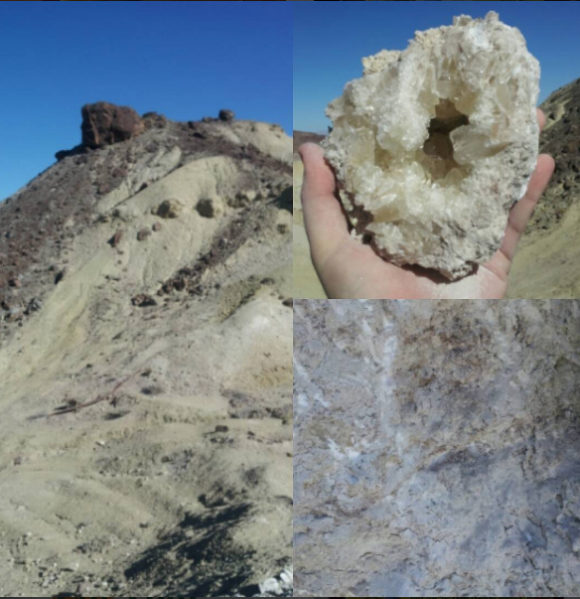
Gem crystal clusters of Colemanite are found in the Calico Mountains, ready to come home with you!
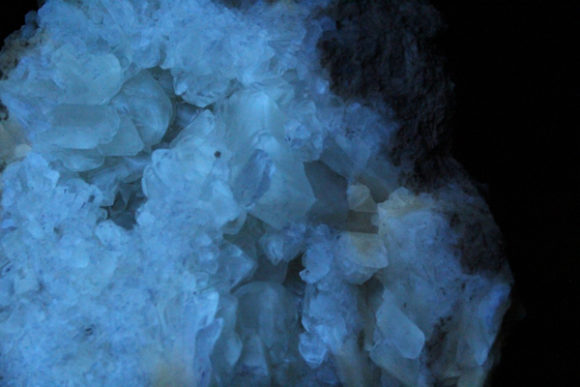
Colemanite glows bright in Short Wave Ultra Violet Light, like MANY of the minerals found in the area.
One of the reasons Barstow is such a great starting point for rockhounding in this area is the prime location. Just 2 hours north-east of Los Angeles and 2 hours south-west of Las Vegas, this town has most everything you need for traveling in this area. Gas, groceries, hotels, restaurants, even the Diamond Pacific Rock Shop, attached to the Diamond Pacific Lapidary Equipment factory. Emergency services, like tire and vehicle repair can be found in Barstow so that even in the worst of conditions, there is somewhere “local” to take care of any problems. Convenience is what Barstow provides and there is no reason why that is not a good thing!
Order it on Amazon, or Buy it for Kindle eBook Readers
Who better to write and produce this Barstow rockhound field guide than the field trip leaders, Justin and Brandy Zzyzx – locals to the area and avid rockhounds, each of the locations in Rockhounding Barstow have been visited by Justin and Brandy. Justin wrote the text and Brandy designed the maps, as you can see in the sample below.
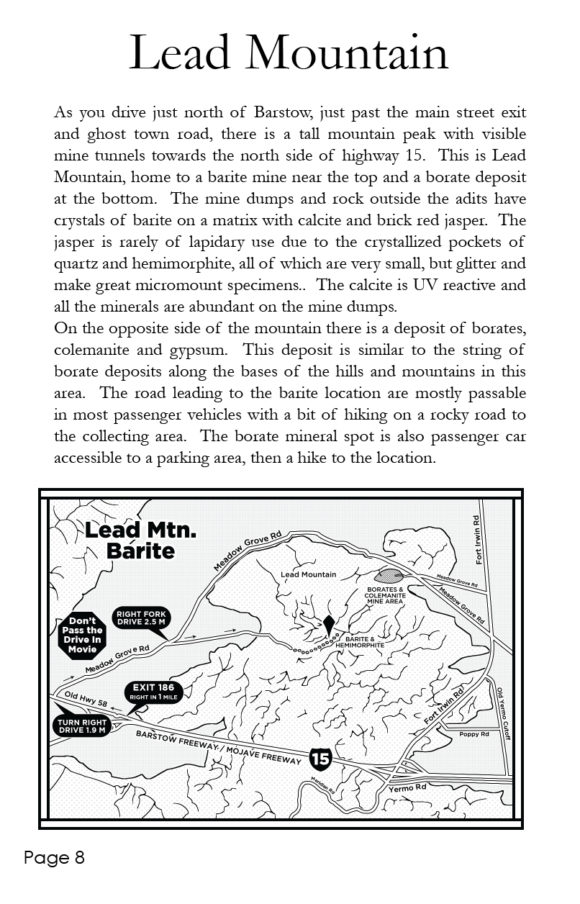
Sample page from the Rockhound Barstow Field Guide – Lead Mountain, just a couple miles from highway 15, a great place to visit and collect colorful crystals!
Many of the locations have been written about before, while some of them are being published in this field guide for the very first time. One of the locations that is very exciting is the North Cady Mountain collecting, including the Top Notch claim, prospected by Bill Depue and John Pickett, of Diamond Pacific. This spot has been producing some really lovely material, bright red, golden siderite, fortification and banding of clear and lavender agate. Oh, a day collecting here just can not be beat! You are going to get directions to this very spot and over 30 more locations, just waiting for you to come visit.
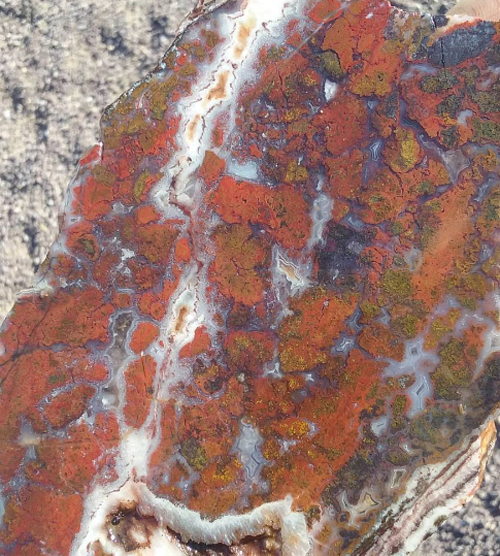
Bright Red and Golden Top Notch Agate from the North Cady Mountains, featured in the Rockhound Barstow Field Guide
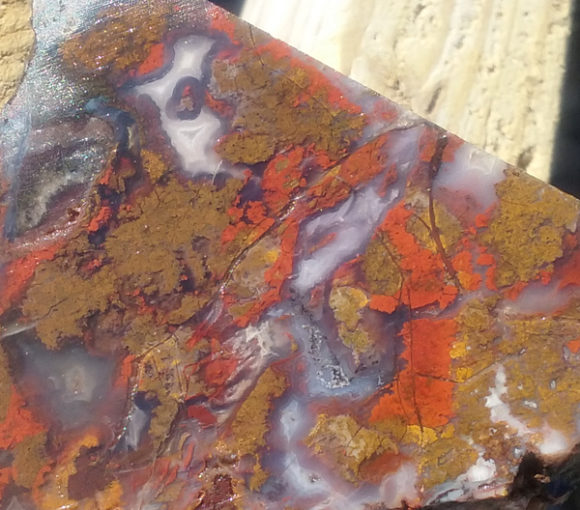
Siderite is not a common inclusion in agates so it is a welcome site to see this material, rich with gold and red along with beautiful gel agate from the North Cady Mountains
Another interesting feature is the interactive rockhound map provided in the guide. Simply type in the website address and on your phone google maps will open up and you’ll be provided with a pinpointed map featuring all the locations in the book PLUS additional locations, each of them showing you EXACTLY where to collect. Most of the locations in the books will have cell phone service, allowing you to use the interactive google map as a guided satellite directly to the collecting location. Truly a first in terms of mineral collecting field guides!
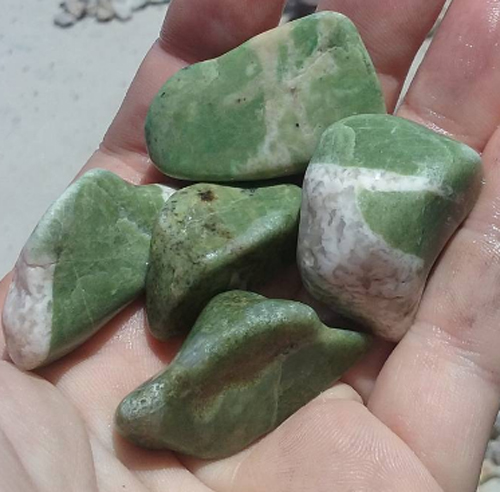
This fun “Nickel Quartz” comes from the North Calico Mountains Nickel Quartz, Wollastonite, Garnet, and so much more await you, with new locations added occasionally.
By now I’m sure you are chomping at the bit to find out how to get your copy of this booklet. This digest sized field guide, with a color cover, color photographs of what you can expect to find, over 20 collecting locations, all this can be yours for $14.99 plus shipping and handling! That’s right, just $14.99 plus shipping gets you a fountain of information, right at your fingertips!
Simply use PayPal to order directly by Credit Card or your PayPal account or purchase a copy from Amazon, Etsy or eBay.
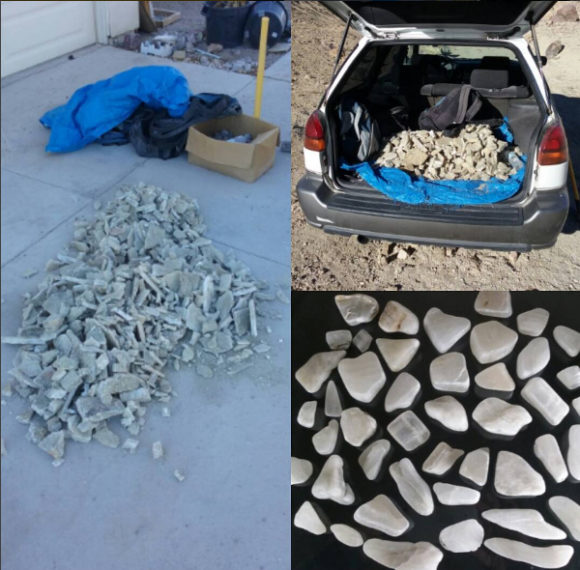
The abundant Gypsum/Selenite in the Calico Mountains is great for tumbling, polishing, carving and collecting. We use it as a water softener.
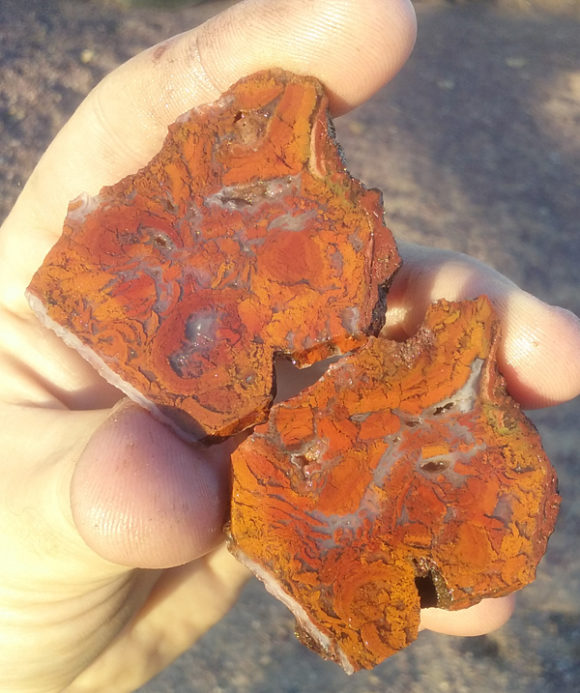
The Lavic Sidling Jasper location is not just limited to the classic areas, but also spilling out to the West and North of Pisgah Crater, as you’ll see in the Rockhounding Barstow Booklet
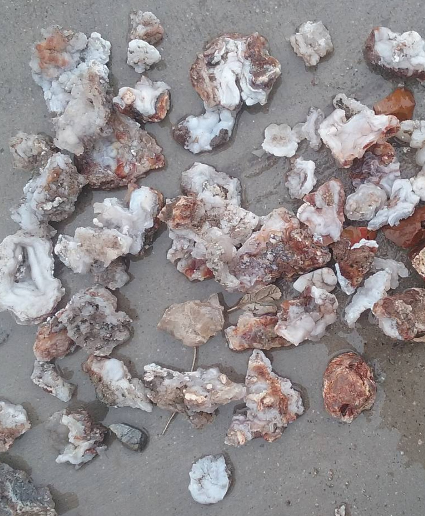
Chalcedony Roses are very abundant out in the Mojave Desert
Pistachios and Minerals – How are they linked?
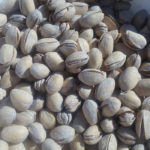
Minerals have long been used in farming. In the past, different abundances of minerals naturally occuring in nature would influence the local crops. Today, many of those conditions can be supplimented with the addition or subtraction of minerals and elements in the soil.
During the author’s years of growing and harvesting pistachios, the link between raw minerals and the final bagged nuts could be visualized.
Pistachio trees are either male or female. You can graft the two together and have one hermaphroditic tree, for the most part, they are separate and do different things.
The female tree has big broad leaves and branches that have lots of curves and style. The male tree has very thin leaves and sharp pointed branches that have sharp, straight, shoots. The female tree is the one that bears nuts, the male tree is responsible for the pollination. They are wind pollinated, so the timing has to be perfect every year during pollination.
The first mineral we mine and use is raw gypsum/selenite. Just a few miles away from our orchard, we have extensive deposits of raw gypsum, which we then water tumble in a giant 50 pound vibrating tumbler. The “waste” water is a large part of what we need for the grove. Fertilizer for the tree including pistachio wood ash, steer manure, a rich compost and tea, plus, crushed gypsum, all watered down with our waste water from the gypsum tumbling.
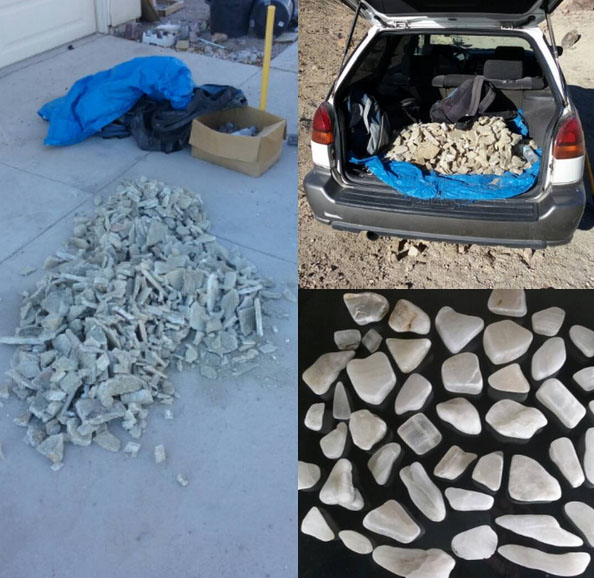
Mining Gypsum to use as a soil irrigation aid
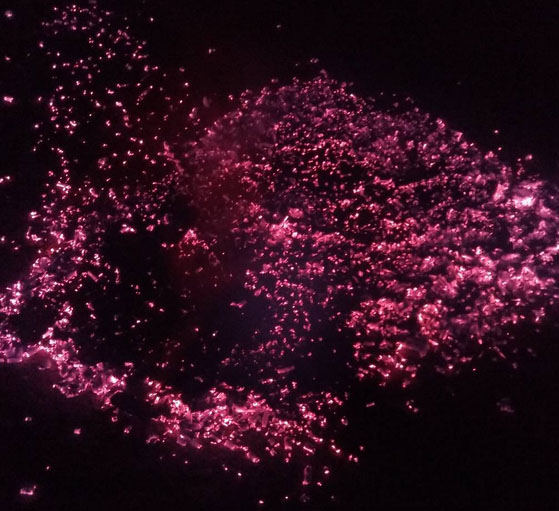
Pistachio wood trimmings are used for roasting and fertilizer, resulting in a beautiful cycle of nature and renewal.
Gypsum has a wonderful effect on soil, creating a path way for water to seep deeper into the ground. This is especially useful for this climate as the soil around the trees needs to soak in the water rapidly to the trees, rather than evaporating away from the top of the soil.
The larger pieces of gypsum were sold as tumbled stones by us at mineral shows.
There are two important times in the pistachios tree’s lives every year. In the beginning of spring, which is around March, the branches start to bud.
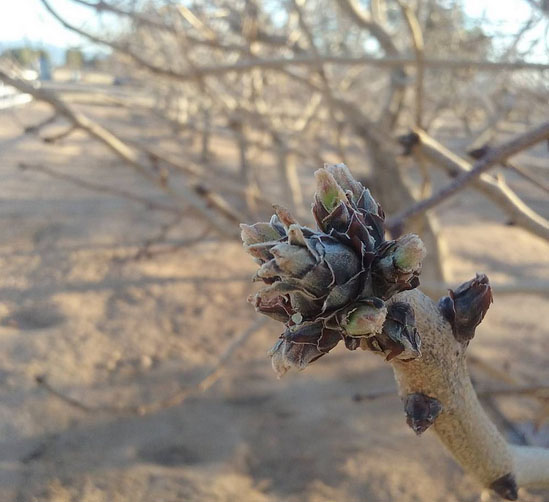
Female Pistachio Tree Starting to Bud
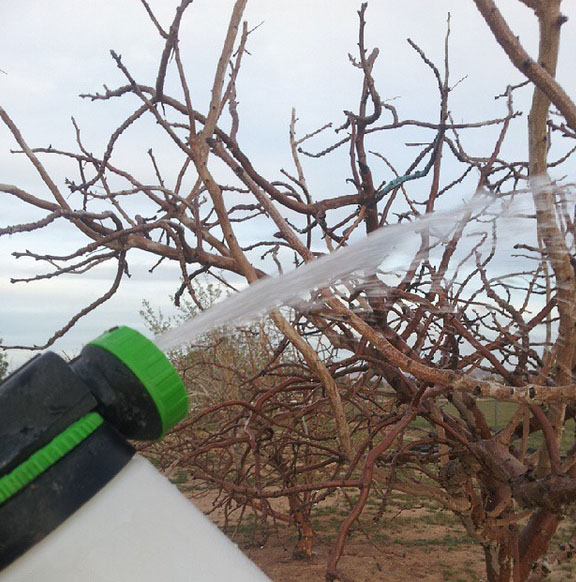
Boron, from crushed Borax crystals, and Zinc, are applied to the buds on the female pistachio tree just as they start to bud.
During this time, pollination is right around the corner, but first, they need a treatment of minerals to help them through the year. A mixture of Borax and Zinc are prepared and sprayed onto the tree’s branches, in order to do two things. The Borax, which we would mine in Searles’ Lake every October, makes the hard shell form thinner, which allows the pistachio seed to break open the shell while on the tree. You want this to happen, as the shell does not open any further after harvest without additional mechanical processing.
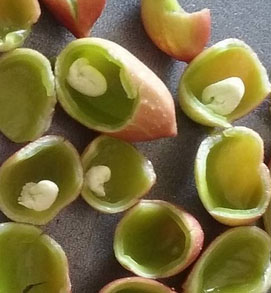
This is a developing pistachio, before it grows the thick brown shell you are familiar with. The Boron helps to keep the nut wall from being too thick, which results in more split nuts during harvest.
The Zinc allows the stems and seeds to hold fast onto the tree, which is very important because the winds in this part of the world can be devastating to an non zinc treated tree, dropping all the blooms and seeds onto the ground, resulting in a loss of pistachios.
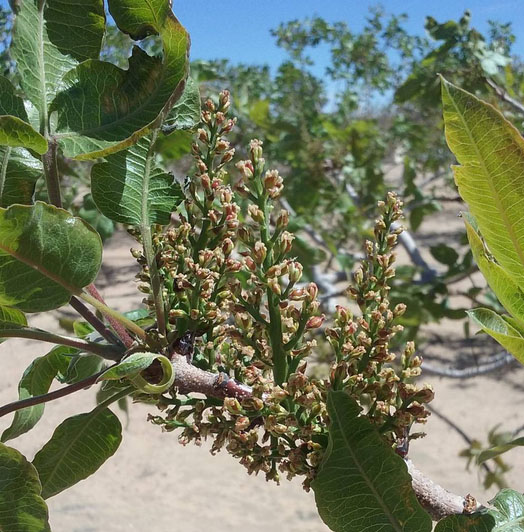
These tiny pollinated buds are now hanging on tight, so they can develop into full fledged pistachio seeds.
At the end of October and beginning of November, the trees are harvested. Most orchards are harvested by a nut collecting tractor, some smaller orchards, like ours, are best harvested by hand. With a dozen people armed with trimming knives and buckets, a couple hundred trees can be done in a few days. We separate the nuts from the stems by rolling them around on a large tarp, where the stems start to float to the top of the pile, then, scoop up the pistachios, put them in an industrial peeler which removes the fleshy coating, then float the nuts in a vat of water. The empty nuts float to the top and the ones with nuts sink to the bottom. They are then air dried and roasted with pistachio wood to fuel our ash needs for the following year.
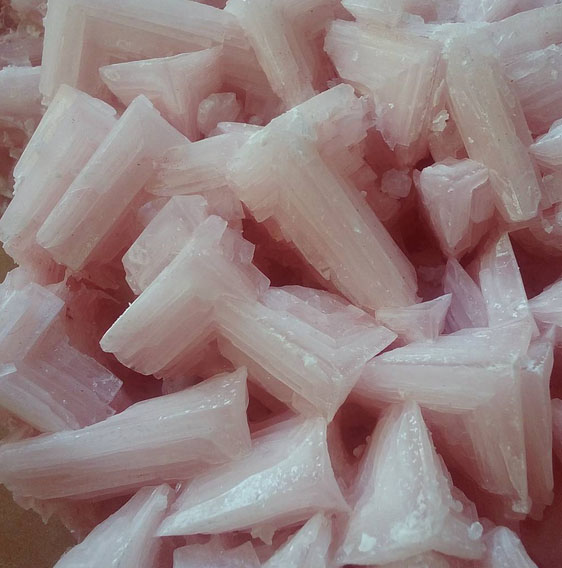
Natural Salt Crystals from Trona California
The end result?
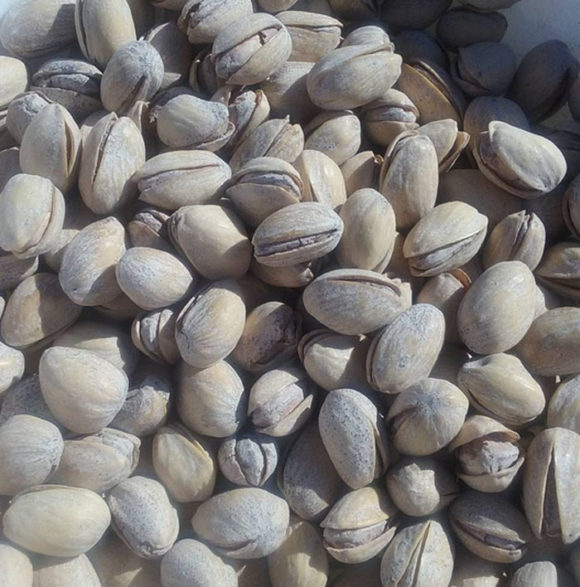
Lightly salted, lightly roasted, pistachio seeds in shell
Now you know what minerals are used in production of the delicious salty snacks you enjoy, hopefully, on the way to a rockhounding adventure!
